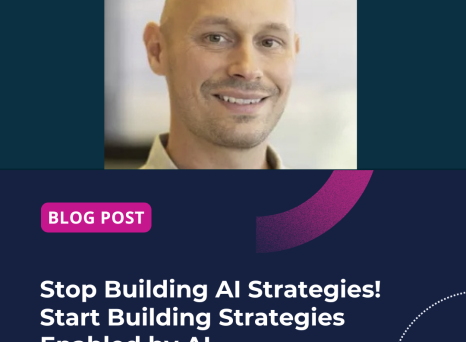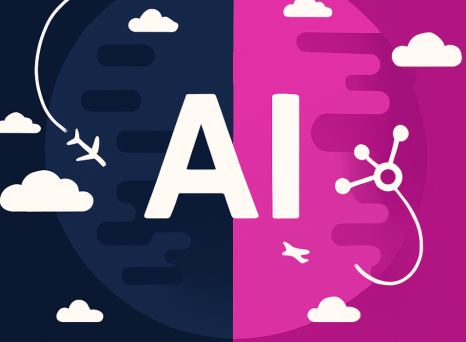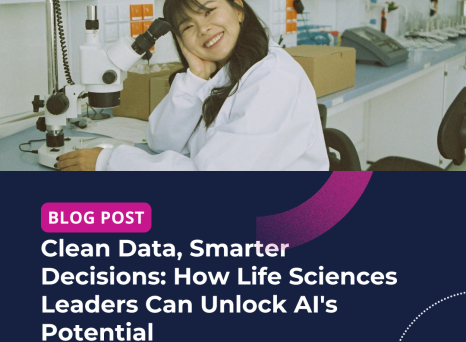To capture the value offered by artificial intelligence (AI), many businesses are aggressively scaling their ambitions. They’re redesigning workflows, reskilling employees, and building new governance frameworks. AI is moving from the experimentation phase to enterprise-wide integration.
This rapid advance is no more evident than in portfolio project management (PPM)—a process of managing and prioritizing projects—and strategic portfolio management (SPM), which takes a higher-level, overarching approach focused on business outcomes.
We already know that AI can boost productivity by automating time-consuming tasks, such as resource management and reporting. On average, it is currently helping workers save around 5 percent of their work hours per week. But AI can transform the operations of the project management office (PMO) beyond the mere automation of repetitive, routine work.
For PPM and SPM practitioners, AI can actually enhance decision-making, data quality, efficiency, risk management, and collaboration across your project portfolios, while minimizing human error and bias.
Generative AI, anomaly detection, predictive analytics, particle swarm optimization, and chatbots are five key AI-enabled PPM and SPM software features poised to revolutionize strategy and execution.
1. Generative AI
Recent advances in big data and deep learning have made generative AI absolutely central to the digital transformation journeys of many organizations.
Generative AI can analyze historical data, training insights, and human feedback to spot patterns, make predictions, and create novel ideas and solutions. This can enhance SPM in a number of ways:
- Scenario modelling: Analyzing past project data to generate potential future scenarios based on multiple, complex variables and presenting them to users via dashboards for comparison.
- Selection and prioritization: Assessing the impact of upcoming projects and portfolios on the business’s goals and making recommendations to ensure strategic alignment and the best return on investment (ROI).
- Ideation: Recommending solutions and generating new ideas by combining several sources, including project data, best practices, trends, and more.
- Project definition and risk: Generating your initial list of project risks with a single click to quickly identify and mitigate potential obstacles.
Consider security and data privacy when selecting a tool that leverages generative AI, as you should maintain authority over all outgoing data. A solution should allow users to define AI use cases, implement them as needed, and deactivate AI technology whenever necessary.
Not only is this security best practice, but it’s bound to ease user adoption: 16% actively distrust AI due to concerns over data security and lack of transparency.
2. Anomaly detection
Forty-two percent of data leaders see data quality as a key hurdle to AI adoption—a challenge that AI itself can help overcome. AI-driven anomaly detection features can enhance data quality by:
- Uncovering hidden trends that business analysts might miss
- Providing deeper insights into anomalies’ root causes
- Analyzing data and flagging issues in real-time for faster intervention
AI can automatically evaluate the health of your project schedules using quality checks based on industry best practice DCMA (U.S. Defense Contract Management Agency) standards. It’s also possible to configure your own custom rules.
Data anomalies in project portfolios often signal misalignment with business strategy. For PPM and SPM practitioners, this can manifest itself in inaccurate forecasts, resource misallocations, and missed strategic objectives.
By continuously monitoring and automatically detecting pattern shifts in this way, AI anomaly detection not only saves time on tedious manual checks, but improves the accuracy and compliance of your data over time. Naturally, this gives decision-makers greater trust and confidence.
But just as humans rely on accurate and reliable data to make decisions, so does AI. Better data fuels stronger AI-driven insights, creating a continuous cycle of improvement for organizations integrating AI into their business operations.
3. Predictive analytics
Predictive modelling is a statistical technique that analyzes your historical data to predict results for projects that have similar parameters.
AI has supercharged this process. With predictive AI analytics, you can use your historical and real-time data to forecast future demand, timelines, and outcomes like never before. This benefits PPM and SPM users by:
- Offering real-time updates to improve data accuracy and maximize productivity
- Analyzing large datasets from multiple sources to support efficient, informed decision-making
- Assessing projects’ strategic impact to allow teams to focus on highest priority initiatives
- Clarifying project timelines to reduce uncertainty and the likelihood of budget overruns
Predictive analytics isn’t new, but AI advancements mean that it can now be scaled and accelerated with improved accuracy, allowing for faster trend and pattern recognition, data analysis at scale, and real-time performance monitoring.
These latest predictive AI capabilities unlock an advanced level of project risk assessment and resource management, empowering PMOs to forecast issues long before they occur and derail progress.
This can be transformative for applications and industries that rely on precise forecasting and data-driven decision-making, such as product development, pharmaceuticals, and mining.
To learn more, take a look at our guide on building an AI predictive analytics model and watch our webinar exploring the transformative power of predictive analytics.
4. Particle swarm optimization
Particle swarm optimization (PSO) is a learning and decision-making model inspired by the natural world.
Just as social creatures like insects, bees, birds, and fish work together to achieve optimal outcomes, PSO uses a population of “particles”, each representing a potential solution. These particles move through a digital search space, learning from their own and others’ successes to converge on the most efficient outcome.
In this way, PSO can uncover the optimum solution to problems with countless variables, solutions, and outcomes. This helps PPMs to boost efficiency, accuracy, and continuous development by:
- Handling multiple, diverse, and sometimes conflicting objectives
- Adapting to changing portfolio priorities, enabling greater agility
- Leveraging predictive analytics and real-time data updates for informed decision-making
Like predictive analytics, PSO is not a novel concept, but its capabilities have been dramatically enhanced with AI. It works by dynamically evaluating countless potential resource combinations to identify the most efficient distribution for your circumstances.
AI-driven PSO can balance and allocate resources intelligently across multiple projects, programs, and portfolios, while being mindful of constraints and business objectives.
![[Enterprise][25Q1] AI Portfolio Optimization Particle Swarm](/sites/default/files/styles/max_789_x789_without_focal_point/public/2025-10/%5BEnterprise%5D%5B25Q1%5D%20AI%20Portfolio%20Optimization%20Particle%20Swarm.png?itok=bpb8gPZ4)
AI portfolio optimization with PSO
It’s not hard to see why this powerful computational method has the potential to optimize your portfolios significantly faster and more accurately than traditional methods.
PSO’s value isn’t limited to large-scale portfolios, either. Its scalability means PMOs of all shapes and sizes can benefit.
5. Chatbots and AI agents
In a PPM landscape, AI chatbots can help automate routine tasks and improve cross-team knowledge sharing. At the next level, in strategic portfolio management spaces, they can facilitate specialist requests relating to numbers, durations, and schedules.
This helps project teams stay informed, aligned, and working more efficiently by:
- Enhancing and facilitating communication through natural language processing (NLP)
- Reducing information silos with real-time, accessible project data and recommendations
- Reducing delays and improving information flow with quick responses to stakeholder questions
The PPM and SPM capabilities of AI chatbot agents have developed rapidly in recent years. Firstly, they can do the more “basic” assistive tasks more effectively than ever before, such as answering questions, including those about documentation.
Take Oscar for example, the integrated Planisware AI assistant. Built on retrieval-augmented generation (RAG), it combines the power of large language models (LLMs) with the accuracy of information retrieval systems. It’s also possible to integrate your own LLMs.
The result is an integrated assistant that delivers clear, relevant, instant guidance based on trusted documentation.
On top of this, AI chatbot assistants like Oscar can perform agentic tasks, such as analyzing data, recommending actions, and executing workflows.
Orchestration agents can coordinate specialized AI agents such as forecasting, risk scoring, and scheduling to create a seamless end-to-end workflow. There’s also no-code agents, which enable business users to create automations without any coding skills.
What does this mean? Chatbots can essentially act as your agentic AI assistant for strategic execution, delivering adaptive intelligence that scales with your organization.
Revolutionize your project portfolio management with Planisware AI
45 percent of project professionals are already integrating AI tools into their workflows, but selecting a PPM or SPM solution is about far more than just choosing a tool for process automation.
With best-in-class predictive, assistive, and generative AI capabilities, Planisware can elevate the strategic value of your projects and portfolios and support more confident decision-making.
Our solutions are trusted by 600+ blue chip companies across 35+ countries. To start your organization’s journey to greater portfolio visibility, productivity, and alignment, book a one-to-one demo.


